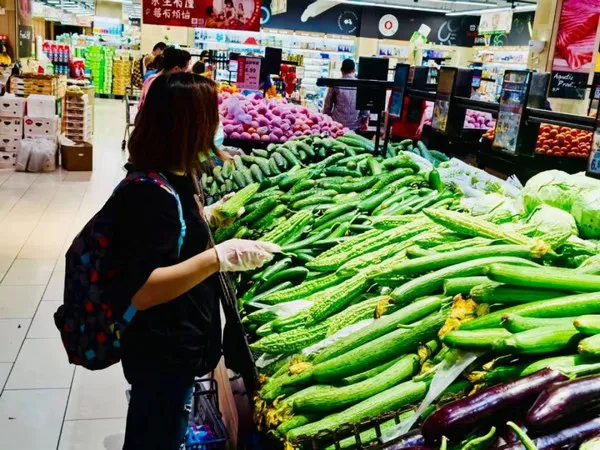While the world began reopening in early 2022, one country still maintains many pandemic policies and travel restrictions. Vanguard connected with the head of its Shanghai office, Timothy Li, to chat about China’s COVID lockdowns and how these are impacting the produce industry in Asia.
Q: We are over two years into the COVID pandemic. How have recent lockdowns in Shanghai impacted the fresh fruit and vegetable market in China?
A: Shanghai is a key market for produce imports in China and as such, the lockdowns have had major impacts on sales, particularly in the eastern China regions. The lockdown checkpoints on the highways and exit route closures set limitations for logistics to transfer products out of Shanghai to nearby cities and provinces.
Every checkpoint requires drivers to have a valid permit and a 48-hour COVID test. The driver limitation and slow clearance of containers limits container storage space at the Shanghai port. This has led to congestion of containers at the port and importers experiencing a minimum of a one-week delay to clear their containers, if not longer.
All restaurants and supermarkets in China are also closed leading to less demand for imported fresh produce.
When we look at exporting from China, the main challenge is the limited labor force in the packinghouses. However, we see very high demand for fresh fruit and vegetables domestically inside China, especially for produce with a long shelf-life such as apples and pears.
This has led to a rise in prices for these items. Another layer, which is a familiar one globally, is the limited empty containers available due to the congestion at the port. This is coupled with various shipping line cancellations, schedule changes and increased ocean freight rates.

Q: What imported fruit have been impacted the most and conversely least?
A: The most impacted products are imported grapefruit and grapes. As all restaurants and juice shops are closed, there is much less demand for fresh grapefruit juice. As grapes have a shorter shelf-life, we are seeing less demand from Eastern China. Imported oranges are the clear beneficiaries of the lockdowns. Their long shelf-life coupled with high vitamin C content encourages people to keep them well-stocked.
Q: How are importers and wholesalers feeling about current demand?
A: We still need time for the market recovery. Importers and wholesalers both feel positive about the future market demand, even though it is predicted to take at least one month to recover back to pre-lockdown status. The summer season is the peak sales period for fruit and will give more confidence to the market leading to an improved recovery in July.
 For more information:
For more information:
Andrea Bava
Vanguard International USA
Tel: +1 (778) 908-1764
[email protected]
https://www.vanguardteam.com/en/
